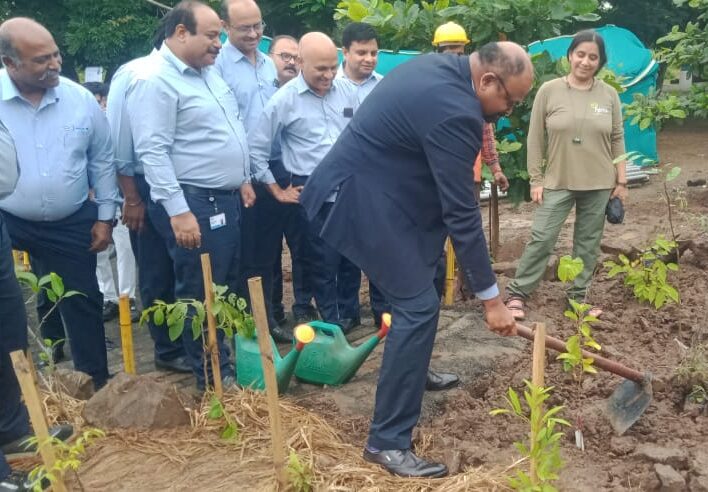
Dana India Pvt Ltd. plant is in MIDC Chakan. Dana India envisioned to restore forest inside their plant premises accessible to their employees.
Forest restoration in a 500 sq m area was carried out with Miyawaki forest restoration technique.
Restoration was planned with the vision of restoration of forest, soil and biodiversity.
Small green pockets in urban areas and in industrial set up are crucial to support biodiversity.
Such small forests act as stepping-stones for bees, birds and other wildlife. Forest restoration is an impactful nature-based initiative in the wake of climate change.
Project Details:
Two available lands were assessed for this forest restoration. The land available inside campus was finalized and restored with forest. Restoration was carried out in a 500 sq m area. For restoration 1000 trees of 133 native, ecologically suitable tree species were selected.
Miyawaki Forest restoration technique–
Miyawaki forest restoration technique is for restoration of degraded land and land devoid of vegetation. After studying and surveying local forest vegetation, native local plant species gets selected for forest restoration. In forest growing technique multi layered forest is created with canopy trees, large trees, medium tree, small trees, shrubs, and climbers. For forest restoration selection of trees is crucial. Forest with diverse species is more resistant to pests and diseases than trees in less diverse, species-poor forests.
Miyawaki Technique advocates replication of local natural forest in density and diversity of species. It supports dense mixed planting to match natural forest systems. As the tree species are selected from local natural forests, the original ecosystem quickly get restored. The technique works on restoring and revival the whole ecosystem.
Selection of trees
Selection of the trees is critical in Miyawaki restoration technique. Native, local, forest species were selected for forest restoration. Native forest trees are strong and are adapted to natural conditions. All of the selected trees have medicinal value, produce fruits, flowers and other NTFPs (Non-Timber Forest Produce).
For restoration, trees are also required to provide food and habitat for declining bird-mammals populations. As pressures increase steadily from growing human populations and climate change, it is essential to grow trees which can support biodiversity. Such tree species were also selected which will be fruiting throughout the year and which will support rich biodiversity down the years. The direct benefits of forest trees on the land are forest products such as fruits and other food products, fodder, medicinal products, shade, and increased moisture in the area. Indirect benefit includes environmental and ecological benefits such as-
These native forest trees have been carefully selected with various properties of-
Process of Forest restoration








Mulching helps in-


11. DANA team participated enthusiastically during planting of saplings. FORREST team conducted an awareness session during the drive.


connect@forrest-india.org
Copyright © 2022 forrest-ecology